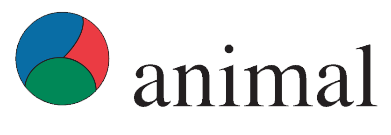Document type: Scientific journal published in Animal
Author: N.J.Kells
Preview: Public concern for the welfare of farm animals has increased over recent years. Meeting public demands for higher animal welfare products requires robust animal welfare assessment tools that enable the user to identify areas of potential welfare compromise and enhancement. The Five Domains model is a structured, systematic, and comprehensive framework for assessing welfare risks and enhancement in sentient animals. Since its inception in 1994, the model has undergone regular updates to incorporate advances in animal welfare understanding and scientific knowledge. The model consists of five areas, or domains, that focus attention on specific factors or conditions that may impact on an animal's welfare. These include four physical/functional domains: nutrition, physical environment, health, and behavioural interactions, and a fifth mental or affective state domain. The first three domains draw attention to welfare-significant internal physical/functional states within the animal, whereas the fourth deals with welfare-relevant features of the animal's external physical and social environment. Initially named "Behaviour" Domain 4 was renamed "Behavioural Interactions" in the 2020 iteration of the model and was expanded to include three categories: interactions with the environment, interactions with other animals and interactions with humans. These explicitly focus attention on environmental and social circumstances that may influence the animal's ability to exercise agency, an important determinant of welfare. Once factors in Domains 1-4 have been considered, the likely consequences, in terms of the animal's subjective experiences, are assigned to Domain 5 (affective state). The integrated outcome of all negative and positive mental experiences accumulated in Domain 5 represents the animal's current welfare state. Because the model specifically draws attention to conditions that may positively influence welfare, it provides a useful framework for identifying opportunities to promote positive welfare in intensively farmed animals. When negative affective experiences are minimised, providing animals with the opportunity to engage in species-specific rewarding behaviours may shift them into an overall positive welfare state. In domestic pigs, providing opportunities for foraging, play, and nest building, along with improving the quality of pig-human interactions, has the potential to promote positive welfare.






